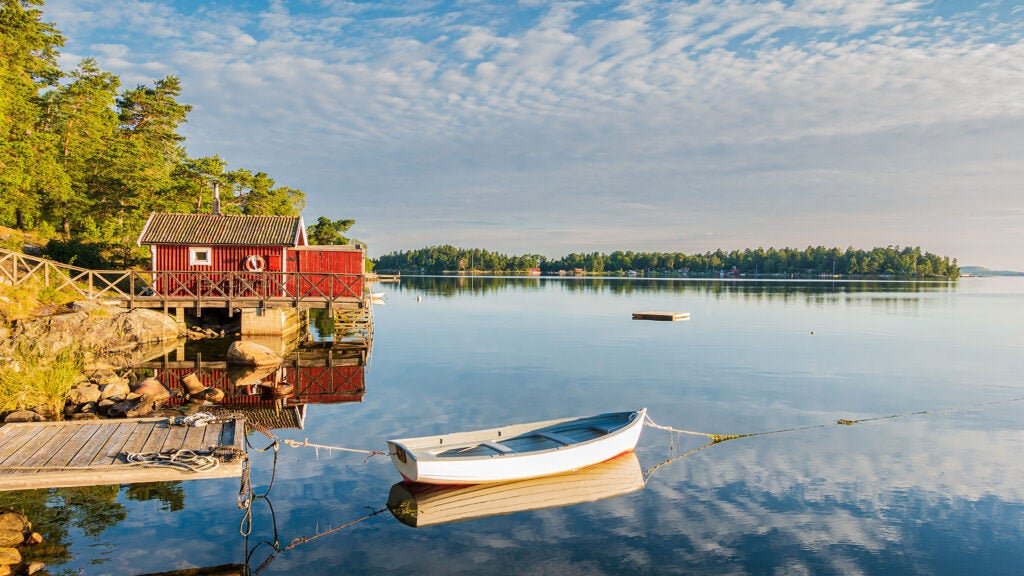No products in the cart.
Outdoor Adventure
Why People in Sweden Do Nature the Right Way
Back in the 1980s, my left-leaning dad used to joke at the dinner table that if a certain right-leaning President were re-elected, we would be moving to Sweden. In his mind, the country of his forebears was an egalitarian society of hale and hearty outdoor people who lived among nature and cared deeply about the welfare of others. My dad had never actually been to Sweden, but all of his grandparents (and my mom’s) emigrated from the old country and we lived in Minnesota where, every year my grandma almost lit my hair on fire by topping it with a crown of candles for December’s St. Lucia celebration. I also graduated from a Lutheran college named after a Swedish king and spent my summers at our lake cottage sweating in our wood-burning sauna. It’s surprising then that I was 28 years old by the time I was finally able to visit the actual country.
The expectations were high on my first visit in 1998. What I found in Sweden was a fascinating mix of familiar and exotic. A land of freshwater lakes lined with rocky shorelines sprouting tall pines, Sweden’s interior was reminiscent of northern Minnesota. But everything else felt elevated. Stockholm’s Arlanda airport was so quiet, lacking blaring TV screens and rushing crowds, that I could hear the overhead fans circulating. The city itself was a sophisticated mix of ancient fortresses and modern architecture inhabited by fit and beautiful people. In Gothenburg, on the west coast, my cousin Ulrika’s husband Roger was the first person I met who spent most of his free time running around in the woods (26 percent of the city is forested) with a compass, which is orienteering, one of the most popular sports in Sweden. In the village of my great-grandfather’s birthplace, I took fika, the ritual coffee break, with my relatives, while ribbons from midsummer festival May pole flapped in the breeze.
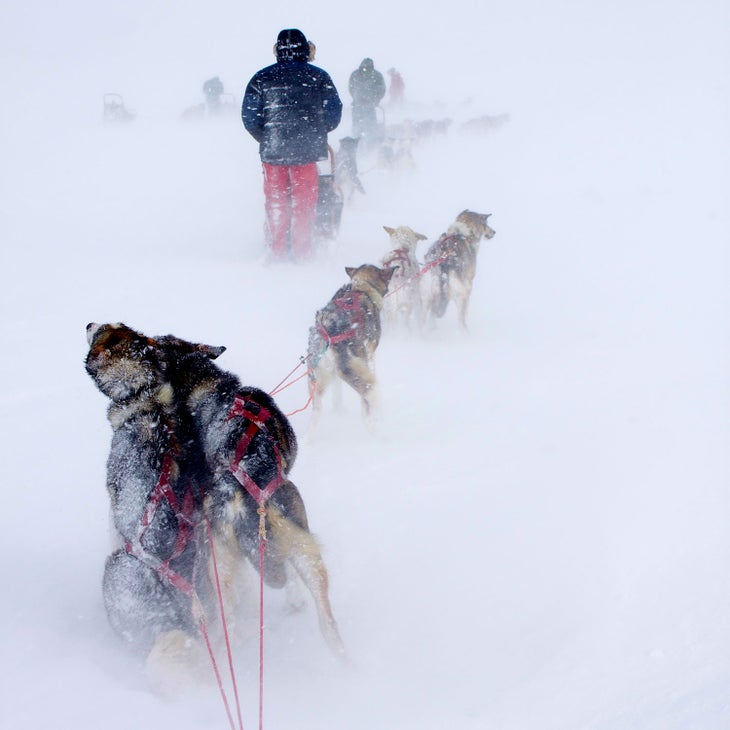
What struck me most about Sweden was how seamlessly everyone integrated the outdoors into their lives. Since my first visit, I’ve returned to Sweden a handful of times to dogsled across the Arctic, hike in Abisko National Park, kayak on the North Sea, and dance to live music at FriluftsByn an “Outdoor Village” on the Gulf of Bothnia with a few hundred mostly Swedes.
But it wasn’t until a couple of years ago when I spent a month in Sweden recovering from emergency eye surgery that I finally put my finger on how Swedes and Americans differ when it comes to their relationship with the outdoors. During my healing sabbatical, I wasn’t allowed to hike, run, ride a bike, lift anything over ten pounds, or sleep on my left side. The mandates were maddeningly restrictive, especially after coming off a summer of chasing Strava medals.
But I could walk. Out the front door of my rental cottage were miles of pastoral country roads lined with beautifully maintained homes whose owners always seemed to be burning brush, painting doorways in pastel shades of blue, or otherwise improving their properties. Beyond the pines and houses, one road led to Näsbokrok nature reserve, a solitary, wind-swept peninsula that juts into the Kattegat Strait between the North and Baltic Seas. One chilly September morning, I passed a rugged-looking maintenance worker in a fluorescent vest taking a lone fika at a picnic table by the sea. It hit me then: Swedes place a premium on being in the outdoors, whereas Americans place a premium on conquering the outdoors.

As Jerry Engström, the founder of FriluftsByn and the former marketing director of Fjällräven outdoor clothing and gear company told me at the time, “The U.S. way of [experiencing the] outdoors has roots in the explorers setting off west to find new lands and conquer nature. In Sweden, nature is more of a home, part of everyday life.”
Sweden had its share of conquerors, too, like the Vikings, of course. More recently there’s Charlotte Kalla, the country’s most successful-ever Nordic skier, who was the first Swedish woman to win both an individual Olympic gold and World Championship Gold medal. Or Armand Duplantis, a world-record-holding pole vaulter. His father is American, but Duplantis competes for Sweden, where the 24-year-old is revered as a demigod. It’s not that Sweden doesn’t foster competition—high school-age students have the choice to apply to boarding schools where the primary focus is to develop elite athletes. The difference, however, is that from birth Swedes are taught to foster a relationship with the outdoors that goes beyond competing in it. Even the Swedish Environmental Protection Agency defines “outdoor life” on its website as: “Being outdoors in natural and cultural landscapes for well-being and nature experiences without the expectation of competition.”
That definition reminds me a lot of the way I grew up in northern Minnesota. My parents’ need to be outside was embedded in their DNA. They had naturally lived by two Scandinavian principles: “Friluftsliv,” (a term that originated with Norwegian playwright Henrik Ibsen when Norway was part of the United Kingdoms of Sweden and Norway), which literally means “Free-Air-Life;” and “lagom är bäst” a Swedish parable that means “enough is as good as a feast.”
Getting their kids outside was Mom and Dad’s top priority, oftentimes in the form of chores. In the fall we’d chop, split, and haul wood, and in the winter and into spring, we’d shovel snow. If there were no chores we’d cross-country ski, all five kids waddling behind our dad chasing the ever-dangling carrot of the rare breakfast out at our favorite café. In the summer we’d swim or fish for walleye or roam free, playing in the woods. Every night we’d clean up by sweating in our wood-fired sauna and jumping in the lake. The end result: happy kids, sound sleep, and, finally, a little privacy for my parents.
Sweden’s Outdoor History: Why Access to Nature Has Mattered For Centuries
It’s no accident that Sweden, a country of only ten million has produced people like Greta Thunberg, Time magazine’s youngest-ever Person of the Year; companies like Icebug, an outdoor shoe manufacturer trying to re-envision its oil and chemical-intensive industry; Fjällräven, Sweden’s precursor to Patagonia; and even Ikea, whose CEO Jesper Brodin, pledged to take the world’s largest furniture retailer climate positive by 2030. His most recent step in 2023 was to replace fossil-fuel-derived glues with bio-based adhesives in products. In total, Sweden has 26 national authorities that work toward achieving environmental goals and eight more that monitor and evaluate those goals.
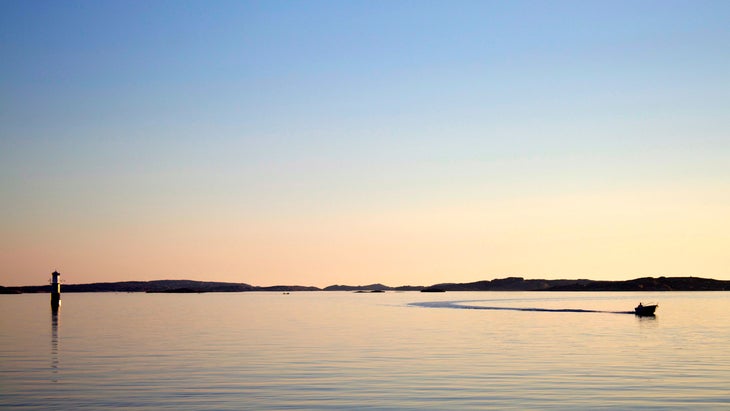
Swedes have had a robust relationship to nature since the days of the Vikings, who were sailing off to what is now Greenland around 980 A.D., half-millennia before Columbus reached The New World. In the centuries since, Carl Linnaeus, the 18th century botanist, zoologist, and physician formalized the modern system of naming organisms. He also laid the foundation for Sweden’s modern conservation ethos. In 1892 Frilufsfrämjandet, the Swedish Outdoor Association, was founded in order to promote and protect Swedes’ constitutional Allemansrätten, or “right of public access,” which allows anyone to walk on any land, public or private, as long as the land is left the way it was before they arrived and nothing is destroyed. Today the Swedish Outdoor Association has 316 local clubs and 7,000 guides that offer adventures from hiking to biking to skiing to paddling to skating for all ages. And there’s still plenty of room to roam. Ninety-seven percent of the country is uninhabited and the 173,860-square-mile nation (slightly larger than California albeit with 28 million fewer people) has 30 national parks and 5,400 nature reserves.
It seems as if every major event in Swedish history resulted in prioritizing Swedes’ relationship with the outdoors. In 1905 when Norway dissolved its union with Sweden, the Swedes realized they had a long, mountainous border to defend against their former allies, who were legendarily good skiers. As a result, the government began programs that taught their populous to ski. And in 1938, after a period of rapid industrialization, the government legislated a mandatory two weeks of summer vacation for everyone, which expanded to three weeks in 1958, which expanded to 25 days in 1977.
“People needed something to do with all this spare time, and hiking, fishing and camping became common,” says Cajsa Rännar of the Swedish Outdoor Association. “Sweden was not a rich country at this time and most people had little or no money to spare, so traveling was out of the question for most. Being outside was a lot of fun at low or no cost.”
To outfit all of these outdoor-loving folks, a Swedish Army paratrooper Åke Nordin started experimenting on his mother’s sewing machine in Örnsköldsvik, an industrial city of pulp and paper mills on the Gulf of Bothnia. He made packs from heavy cotton canvas and attached them to a wooden frame. In 1950, he created Fjällräven, whose ethos has been simplicity, sustainability, durability, and functionality for more than 70 years. Today everyone from Swedish schoolkids to Malaysian fashionistas commute with their Kånken backpack.

In 1968 it was Sweden that first suggested to the United Nations Economic and Social Council the possibility of having a U.N. conference that focuses on human interaction with the environment. The first conference, held in 1972 in Stockholm, focused on “stimulating and providing guidelines for action by national government and international organizations facing environmental issues.”
In 1989 Karl-Henrik Robert, a renowned Swedish cancer scientist founded “The Natural Step,” a framework that lays out the conditions required for a sustainable society. Robert received permission from the king of Sweden to circulate his framework to households, schools, businesses, media, and organizations. His template was a way for Sweden—from individuals to corporations—to plan for strategic, sustainable development, which is the model still used by companies like Icebug. In a 2018 TedX Talk, Roberts explains his system this way: “You cannot plan ahead if you don’t know what you want for the future.”
In 2017, Sweden announced its plan to become the first ever fossil-free welfare society in the world, reaching net-zero emissions by 2045 at the latest. The country is well on its way. In 2023, it was tied for number one (with neighbor Finland) out of 150 countries assessed on the independent 2023 RobocoSam Country Sustainability Ranking, a tool that assesses a country’s investment risks and opportunities based on 40 indicators across environment, social welfare, and governance. (The US is ranked 40.) And for the past ten years, Sweden has been among the top ten in the global Environmental Performance Index from Columbia and Yale Universities for exceptionally clean air and water and low emissions.
Stockholm, the capital, is one of Europe’s climate-smartest cities according to The Economist Intelligence Unit, and Gothenburg—26 percent of which is wooded—has been named the world’s most sustainable city for the seventh year in a row by the Global Destination Sustainability Index, thanks to electrified trains, more than 90 percent eco-certified hotels, a clean harbor, and accessibility for walkers and cyclists.
Living Sweden’s Free-Air-Life
After my final eye-doctor appointment four years ago, my cousin Ulrika and I celebrated with a walk through the forest surrounding Gunnebo House, a palatial 18th century estate on the outskirts of Gothenburg. It was full of Saturday joggers, kids orienteering through the woods on their mountain bikes, and multigenerational families out to enjoy the fresh air and eventually end up, as we did, at the Kaffehus och Krog, a restaurant that has a pastry case filled with decadent sweets. In an effort to eat like a Swede, I chose one small chocolate cupcake and it tasted divine while eating at a picnic table under the sun.
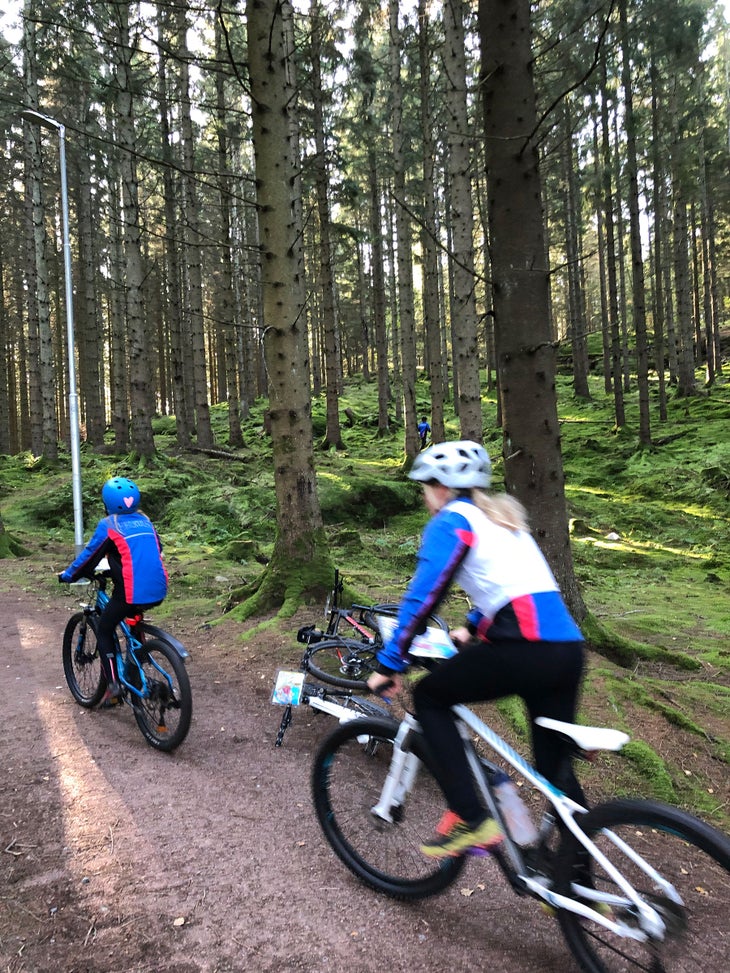
The Swedes’ saying “Lagom är bäst” (in essence: everything in moderation) goes a long way toward explaining their relationship to sustainability and the outdoors. As David Ecklund, founder of Icebug explains it: “You have to take responsibility if you make products. First of all, you have to create products that people really need. The next phase is making them so that people wear them as long as possible, so they have to be durable, sustainable, comfortable, and don’t look dated after a year or two. Then you have to minimize the impact of the product after it’s finished—how much do you have to wash it? How long will it be until it ends up in a landfill?”
To make getting outside easier to do for its employees, Icebug rehabbed an old factory on the outskirts of Gothenburg that is a two-minute walk to the trails. Three times per week, the company closes down for an hour per day of paid time so that employees can take off to the forest to hike, run, or walk together.
“Swedish society is unique in that it all comes back to people getting together and doing things outside. It’s not necessarily about big adventure, but that feeling that you are a part of nature,” says Ecklund.
That’s exactly the philosophy Jerry Engström used when he left his position as marketing manager of Fjällräven to start his new endeavor, “FriluftsByn” or “The Outdoor Village,” in the heart of a World Heritage Site, the Höga Kusten or High Coast, a land of steep granite cliffs and rocky islands that runs 66 miles along the Gulf of Bothnia coast and includes the old-growth spruce forests of Skuleskogen National Park.
The luxurious, yet rustic village, composed of cottages, chic tiny homes, and a tent and RV-camping area, surround a gathering place with multiple fire pits, a stage for live music, and two restaurants, one at the top of a mountain, with outdoor tables topped by flowers. Its dreamy Scandinavian aesthetic is Instagramable from every possible angle. The compound sits at the base of a 1,000-foot mountain, where trails link up to the 85-mile-long High Coast Trail; and next to a small lake, perfect for SUPing, saunaing, and swimming. Five minutes away is a sheltered bay in the Gulf of Bothnia, an ideal launch pad for a paddling trip on the 18-mile High Coast Kayaking Trail and Via Ferrata Skuleberget, a climbing area with four routes of varying difficulty up 1,000-foot peak Skuleberget. At the top is a restaurant with 360-degree views of ocean, forests, and sky.
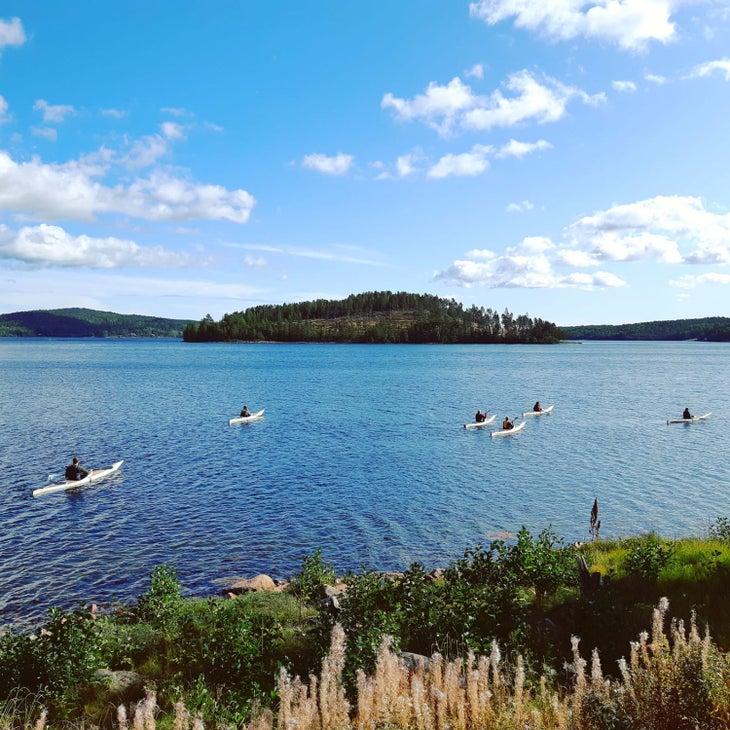
The access to communal outdoor activity at FriluftsByn is unparalleled, but Engström wants to take outdoor living to the next level, using his compound to, as he says, “contribute to a new 21st century outdoor movement.”
“Places like this have values that city centers cannot provide,” Engström explained to me in an email after my trip. But, he adds, “we do not intend to share only teaching the names of plants or birds.” Instead, Engström envisions FriluftsByn to be a place to “showcase that nature is a root of creative output that can take the form of architecture festivals, song-writing camps, and other creative opportunities that allow his guests to, as Engstrom says, “feel human again.”
I’m more solitary in my wilderness pursuits and was at first tepid at the thought of hanging out with a few hundred strangers for a long weekend. But I spent four days at FriluftsByn one September a few years ago, kayaking, hiking, dancing to live music, and eating breakfast in the chilly outdoors around a campfire talking with whoever came my way. And while, like every introvert, I needed to duck for cover into my sheepskin-rug-strewn tiny home at around ten every night, I spent most days energized by the positive energy of all the Swedes, most of them wearing multi-hued Fjällräven hiking pants, who were having the time of their lives building fires from wood shavings, goofing around on paddleboards down at the lake, and taking off at sunset for hikes to the moonlit summit of Skuleberget. FriluftByn’s simple, clean, elegant digs surrounding a communal gathering area with healthy food and ample beer, were facilitating something larger than a mere camping experience or outdoor music festival. It was more akin to a spiritual gathering.
The Joy and Ease of Public Access in Sweden
After my three-week recovery, the weekend before I flew home, my cousin Ulrika, her husband Roger, and I set out on a day-long adventure that they had planned for the three of us. It was a simple outdoor epic, but it didn’t take me long to realize that I couldn’t have replicated it at home because the right of public access doesn’t exist in the U.S. and, had we tried it there, we would have inevitably run into private property or a fence or a salivating guard dog.
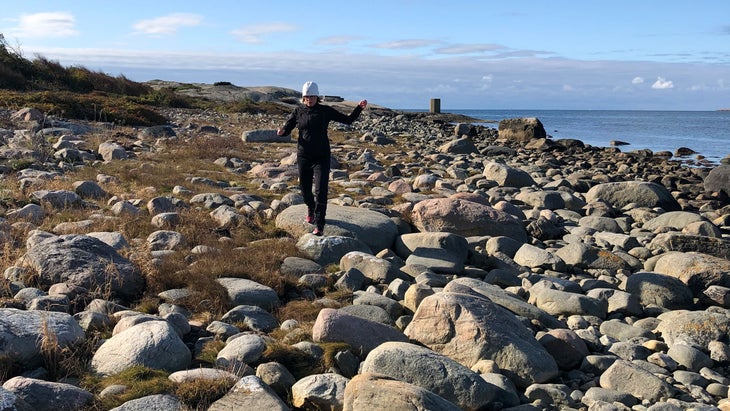
From their house in a bucolic bedroom community on the sea that sits roughly halfway between Gothenburg and Varberg on Sweden’s west coast, Roger drove ten miles through town and parked the Volvo at the public lot next to a beach. Then the three of us started walking on the sand north and west toward their home. The morning was sunny and cool. We passed sleek glass houses and classic red Swedish cottages, unified by their Swedish flags flapping in the breeze. We kept walking along the sea, passing one neighborhood after another, all of which had a community sauna, some with smoke puffing out of the chimney, and a marina, where locals moored their wooden cruisers or sailboats. The farther north we walked, the wilder the terrain became. At Nasbokrok nature reserve, the beaches got rockier—a good point to regroup and stop for fika, with hot coffee from a thermos and thin and lacy sugar cookies Ulrika had made from scratch. After the sugar infusion we resumed our quest, jumping across large boulders and crevasses, laughing and route-finding our way back home, caught up in the simple joy of being outside together.
Almost five years have passed since that trip to Sweden. I still get queasy when I think about how close I came to losing my eyesight. But the gift I received during that month was even greater than a restored left eye. I was also given renewed vision for how I want to live.
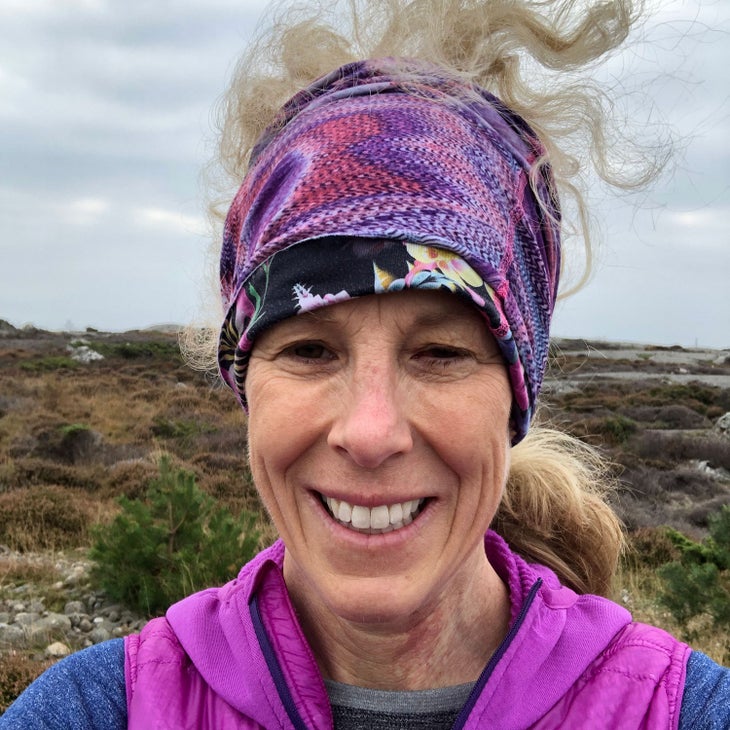
Outside contributing editor Stephanie Pearson has been to more countries than we can count and loves a good Sven and Ole joke.
Source link

